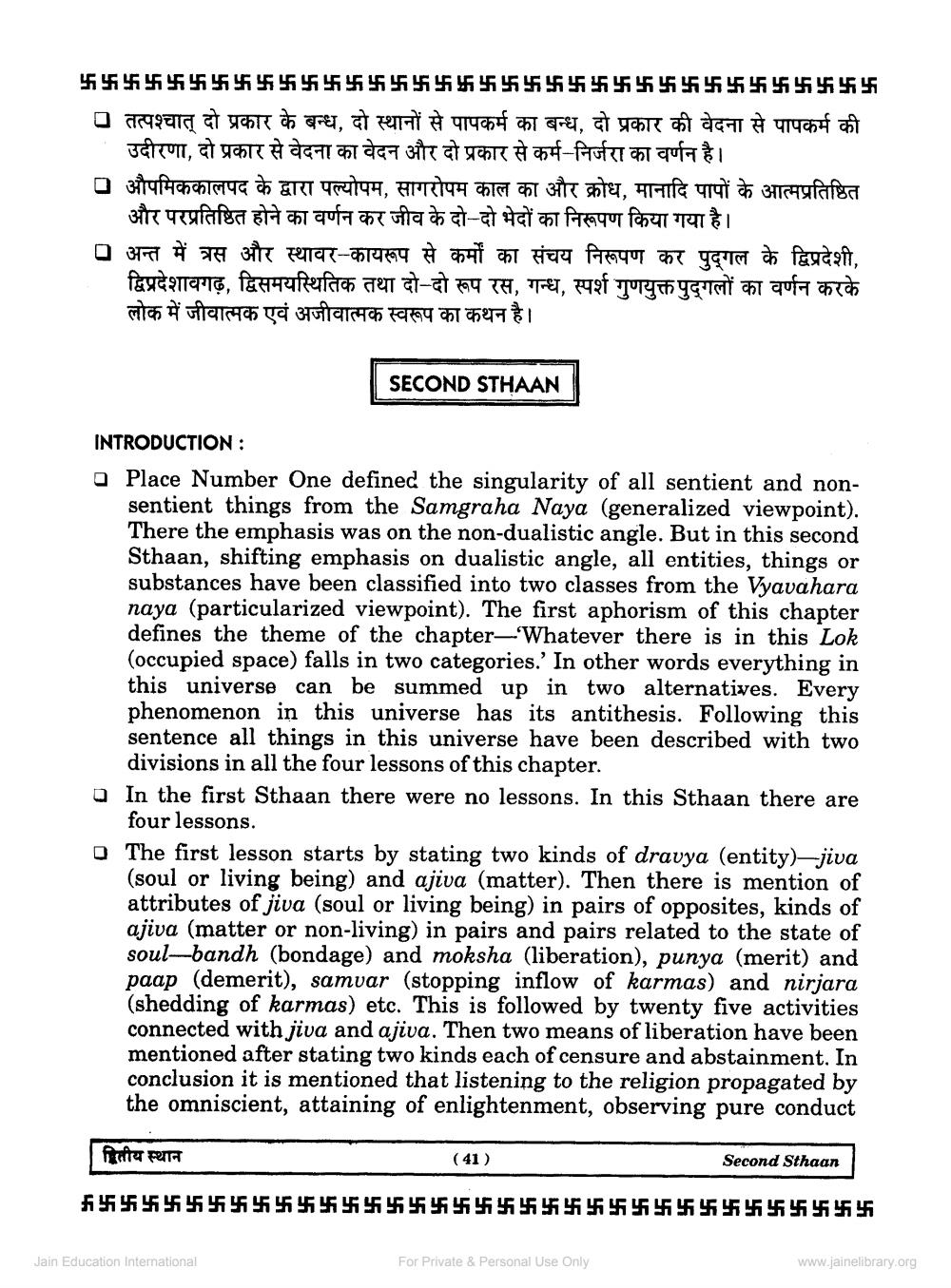________________
5555555555555555555555555555555555555 । तत्पश्चात् दो प्रकार के बन्ध, दो स्थानों से पापकर्म का बन्ध, दो प्रकार की वेदना से पापकर्म की
उदीरणा, दो प्रकार से वेदना का वेदन और दो प्रकार से कर्म-निर्जरा का वर्णन है। 0 औपमिककालपद के द्वारा पल्योपम, सागरोपम काल का और क्रोध, मानादि पापों के आत्मप्रतिष्ठित
और परप्रतिष्ठित होने का वर्णन कर जीव के दो-दो भेदों का निरूपण किया गया है। । अन्त में त्रस और स्थावर-कायरूप से कर्मों का संचय निरूपण कर पुद्गल के द्विप्रदेशी, द्विप्रदेशावगढ़, द्विसमयस्थितिक तथा दो-दो रूप रस, गन्ध, स्पर्श गुणयुक्त पुद्गलों का वर्णन करके लोक में जीवात्मक एवं अजीवात्मक स्वरूप का कथन है।
SECOND STHAAN
INTRODUCTION : a Place Number One defined the singularity of all sentient and non
sentient things from the Samgraha Naya (generalized viewpoint). There the emphasis was on the non-dualistic angle. But in this second Sthaan, shifting emphasis on dualistic angle, all entities, things or substances have been classified into two classes from the Vyavahara naya (particularized viewpoint). The first aphorism of this chapter defines the theme of the chapter—'Whatever there is in this Lok (occupied space) falls in two categories.' In other words everything in this universe can be summed up in two alternatives. Every phenomenon in this universe has its antithesis. Following this sentence all things in this universe have been described with two divisions in all the four lessons of this chapter. In the first Sthaan there were no lessons. In this Sthaan there are four lessons. The first lesson starts by stating two kinds of dravya (entity)—jiva (soul or living being) and ajiva (matter). Then there is mention of attributes of jiva (soul or living being) in pairs of opposites, kinds of ajiva (matter or non-living) in pairs and pairs related to the state of soul-bandh (bondage) and moksha (liberation), punya (merit) and paap (demerit), samvar (stopping inflow of karmas) and nirjara (shedding of karmas) etc. This is followed by twenty five activities connected with jiva and ajiva. Then two means of liberation have been mentioned after stating two kinds each of censure and abstainment. In conclusion it is mentioned that listening to the religion propagated by the omniscient, attaining of enlightenment, observing pure conduct
रितीय स्थान
( 41 )
Second Sthaan
Jain Education International
For Private & Personal Use Only
www.jainelibrary.org




